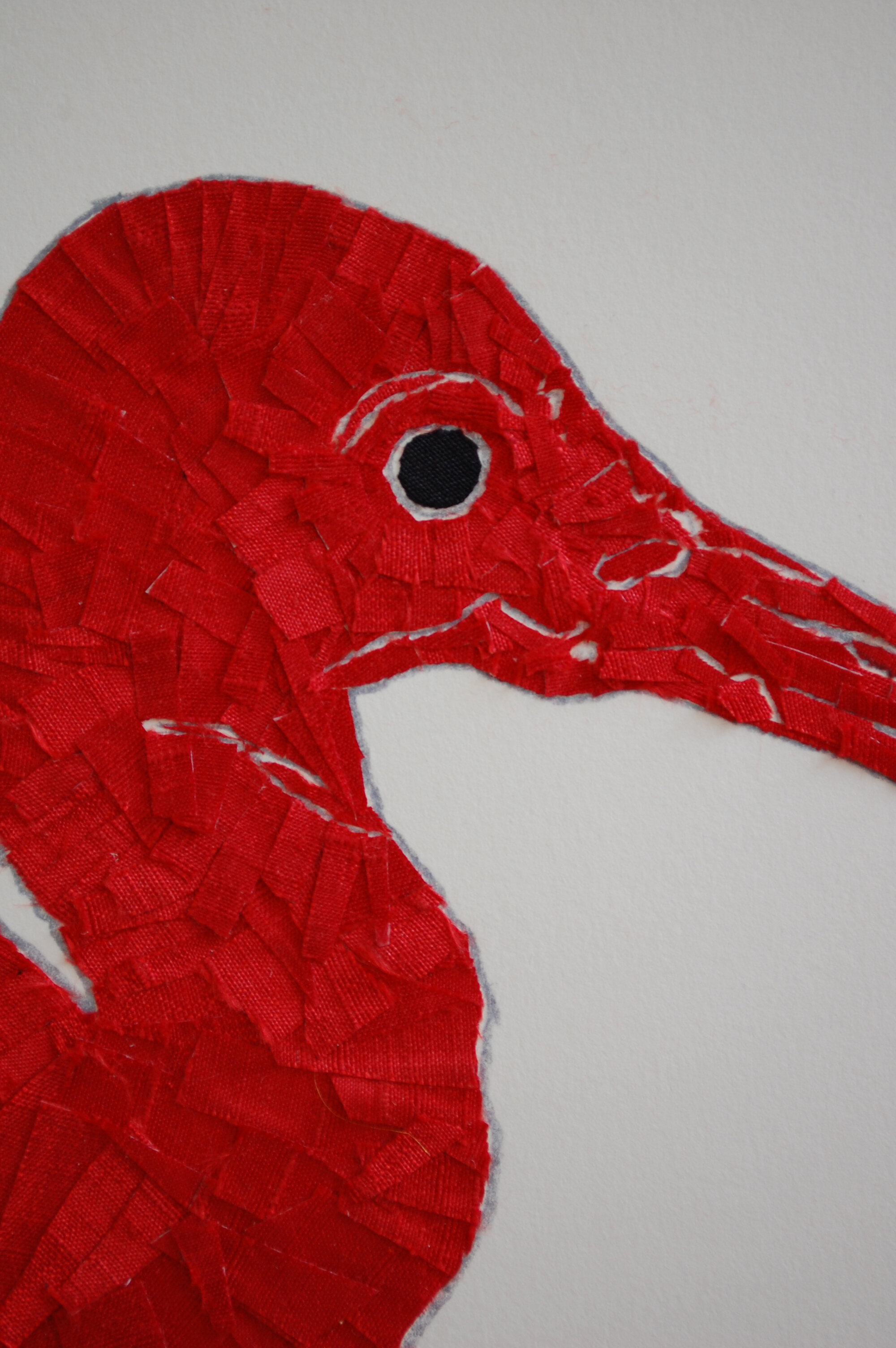Owl
lace, bead work, wooden printing block, bull’s ring
2012
Installation view of Monkey’s Recovery, at Clint Roenisch Gallery, 2012
Aloysius
peacock feathers, ostrich feather, satin cord
2012
Thistle Eyes
dried thistles, shell, ceramic
2012
Lace Face
lace, pear tree branch, metal
2012
Baboon
paper pinata mask, fishing lure, geode
2012
Ghost
sand dollars, shell, cuttlefish bone
2012
Book Eyes
book with silk dust jacket, oyster shell, metal
2012
Book Teeth
foil, paper, books with silk dust jackets
2012
Installation View of Monkey’s Recovery
Scarlet Ibis
silk and coloured pencil, on paper
2012
Peony
silk and coloured pencil on paper
2012
Grey Ghost
suede and peacock feathers on paper
2012
Hook Moon
gold leaf and lace on paper
2012
Carp
sequins and coloured pencil on paper
2012
Bat
butterfly wings and coloured pencil on paper
2012
Shadow Fox
cellophane and coloured pencil on paper
2012
Snake
first place satin ribbon and coloured pencil on paper in custom frame
2012
Canadian Art
DECEMBER 15, 2012
Jennifer Murphy
Clint Roenisch, Toronto
Jennifer Murphy “Monkey's Recovery” 2012, photo Toni Hafkenscheid
by Kyla Brown
Jennifer Murphy’s exhibition “Monkey’s Recovery” at Clint Roenisch greeted the viewer with a stick rising from the floor topped with a bright-pink piece of tulle. On the gallery walls was a collection of curious objects that included lace gloves, a hawthorn twig, ceramic bowls, dried flowers, screens, disks and driftwood. Together, these clusters of low-relief, everyday craft objects created a crowd of simplified faces or masks, with the objects brought together to form eyes, noses and mouths.
Near the window, two framed woodblock prints by the Japanese artist Tsukioka Yoshitoshi served as reference points that provided a key, but not an answer, to reading the exhibition. While the prints may have guided Murphy’s use of materials and content, what seemed most important was the phantasmagoria that Murphy brought forth.
The theatrics of “Monkey’s Recovery” revolve around Murphy’s impressive lightness of touch, which draws the viewer into the delicacy of the works. The materials—a feather serving as a smile or a dish that becomes a mouth—gesture toward the quirkiness of craft practice and toward its propensity to demonstrate that nature can fool us with appearances. Murphy’s installation functions as a formal process of material connections. At times, the objects become part of a shifting, unknown ritual, or the traces of the magic of a place.
The back gallery held framed collages of flora and fauna made from other intricate found materials, such as eel skin, cellophane, suede, butterfly wings, sequins, silk, gold leaf, lace and a first-place-horse ribbon. While the narrative aspect of the main space was not present here, the same ritual process of collecting and building forged a connection between these collages and the front-gallery assemblages. The collages seemed to function as studies—preparatory models for the mystic world of crowded faces in the main gallery.
“Monkey’s Recovery” was a departure from Murphy’s previous exhibitions, where her works showed off a more glittering, conventional beauty. The artist has moved into new territory this time. It is more strange and unsettling. It is also more stimulating.
This is an article from the Winter 2013 issue of Canadian Art. To read more from this issue, please visit its table of contents.
Kyla Brown




















